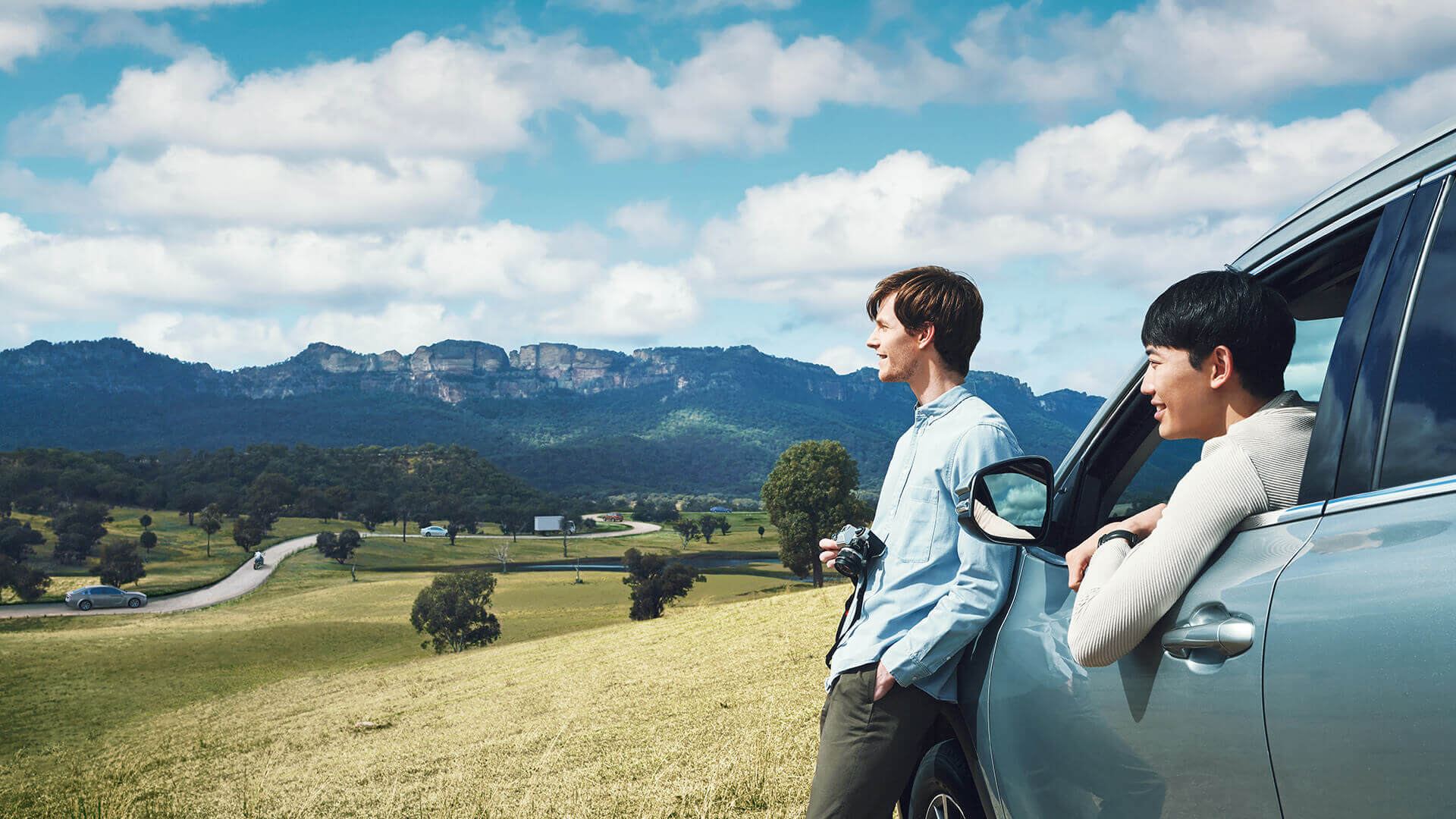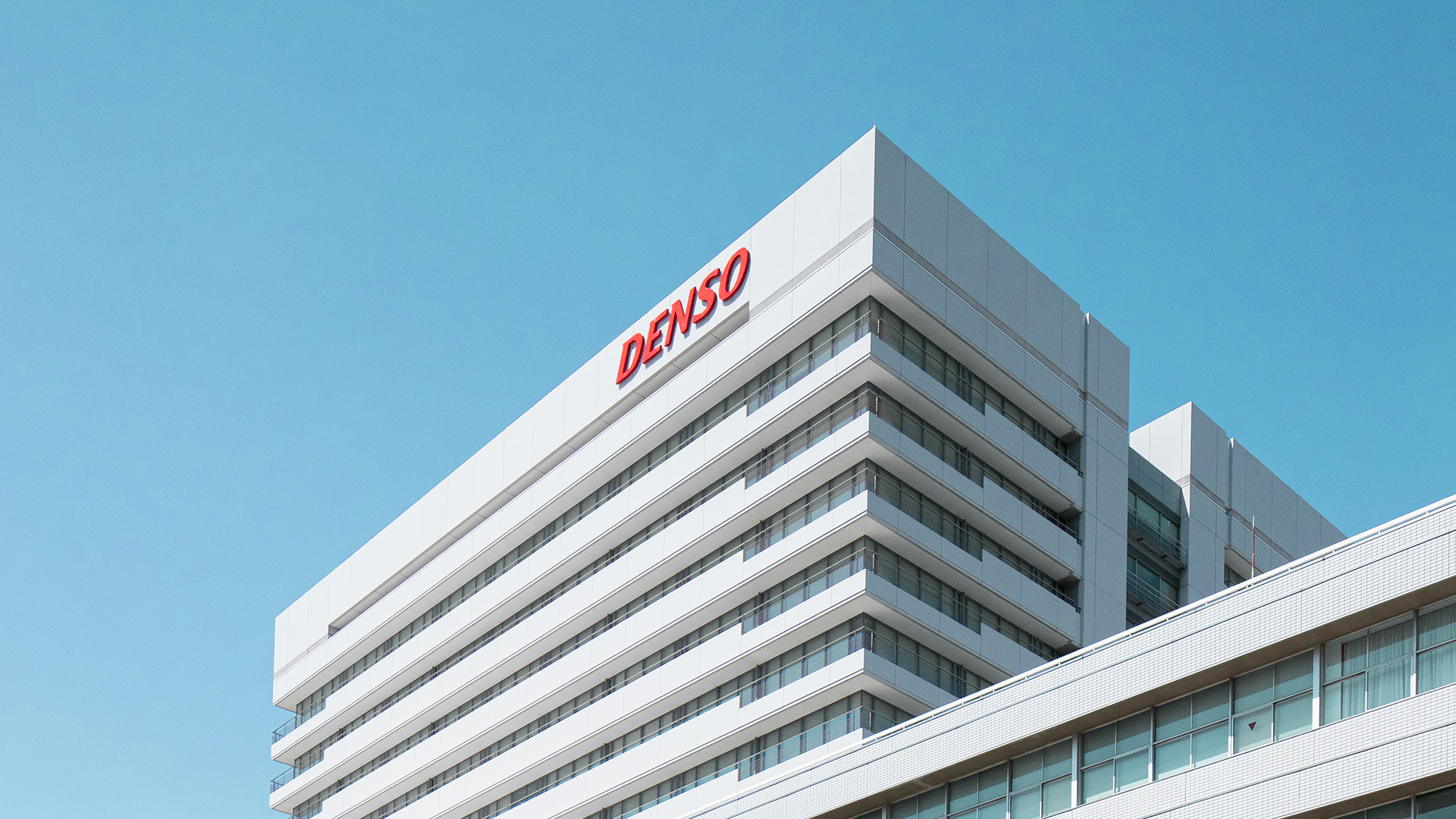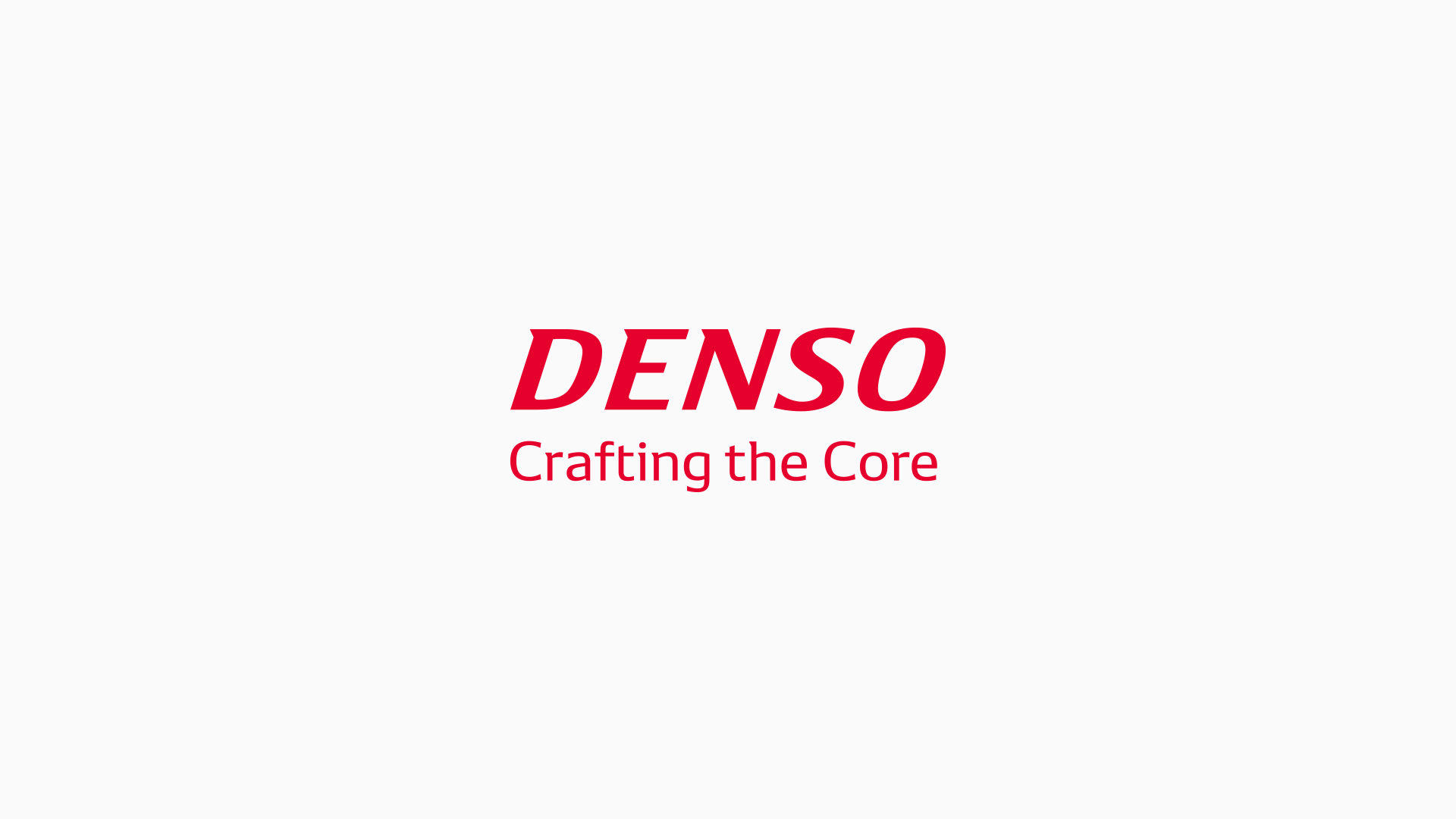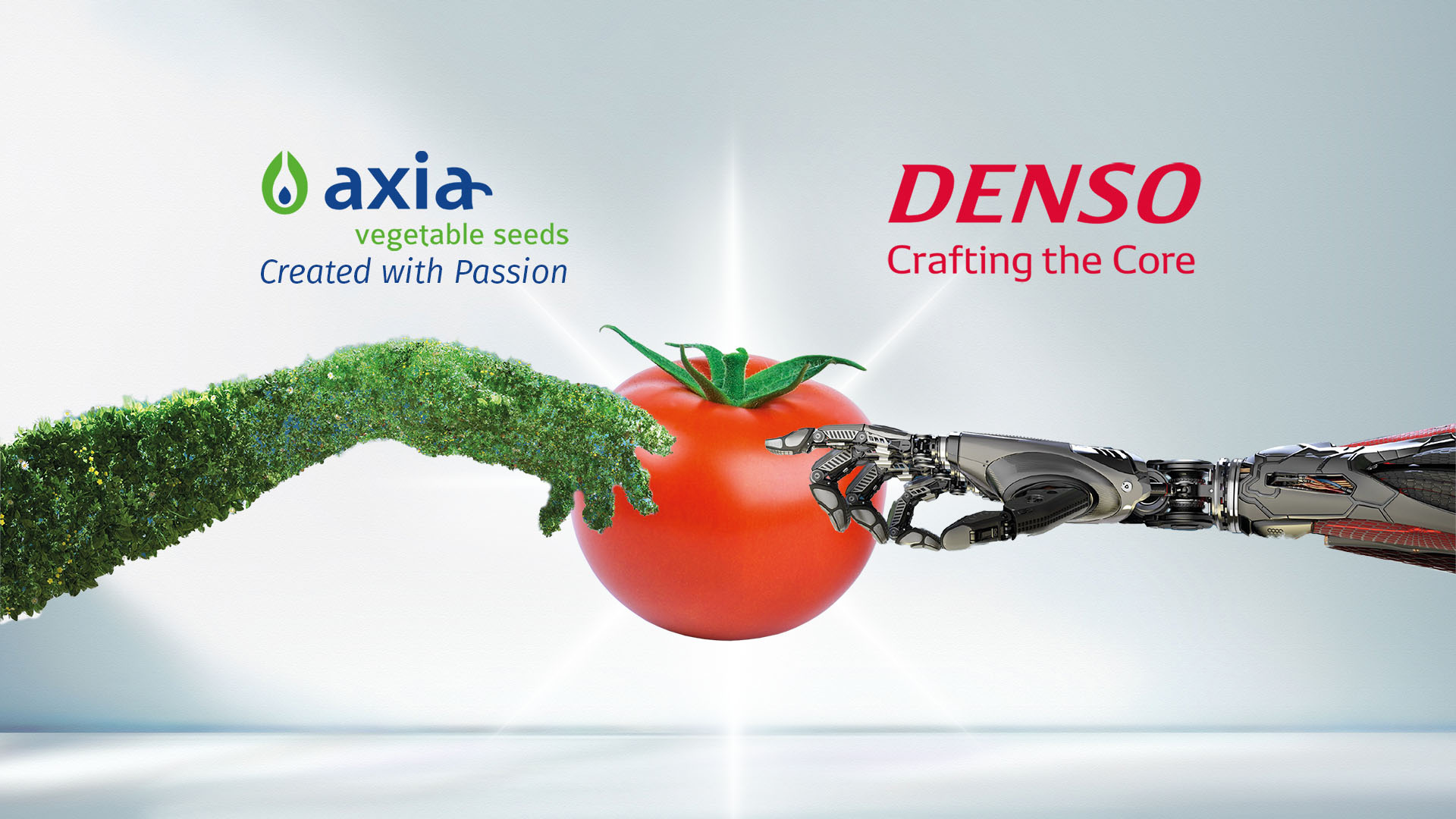Thoroughly Eliminating Inefficiencies through Seamless Development from Materials to Systems — DENSO’s initiative to develop SOEC systems, which are indispensable for creating a hydrogen society
Naohiro Hayashi, who is engaged in the design and development of a solid oxide electrolysis cell (SOEC) system, delivered a presentation about SOEC technology.
【Speaker】
Naohiro Hayashi
Next-generation Fuel Cell R&D Dept., Environment Neutral Systems Development Div.
DENSO CORPORATION
Naohiro Hayashi, a designer and developer of SOEC systems
In my presentation, I will explain SOEC technology.
Before that, let me introduce myself briefly. I’m Naohiro Hayashi. After joining DENSO in 2008, I was involved in designing and developing the catalyst support for purifying the exhaust gas of diesel- and gasoline-fueled vehicles in the Ceramics Eng. Div. Later, I was transferred to the R&D Div. via the in-house FA system, which enables employees to sell their strengths and apply for jobs in other departments. In 2018, I started working on all-solid-state lithium-ion batteries. I was then transferred to my current department to design and develop SOEC systems.
What is an SOEC?
Let me explain how an SOEC works. Simply put, an SOEC is a system to generate hydrogen. There are various types of systems for generating hydrogen.
The three main types are: alkaline fuel cells (AFCs), polymer electrolyte membrane fuel cells (PEMFCs), and SOECs. The key differences are the material through which ions pass (i.e., electrolytes) and the operating temperature. In AFCs, ions pass through an alkaline solution, and the operating temperature is between 60°C and 80°C. In PEMFCs, ions pass through a polymer membrane, and the operating temperature is between 50°C and 80°C. Both AFCs and PEMFCs operate at temperatures slightly higher than room temperature.
In SOECs, ions pass through a ceramic membrane, and the operating temperature is between 600°C and 800°C, which is much higher than that of AFCs and PEMFCs. This allows hydrogen to be supplied at low cost. The hydrogen cost depends on three main factors.
The first factor is the initial cost, which is the cost paid by the customer to buy a water electrolysis system. The second factor is the maintenance cost, which is incurred for periodic maintenance to prevent deterioration due to age. The third factor is the running cost, which is dominated by the electricity cost. We believe that SOECs have an advantage over AFCs and PEMFCs in terms of the running cost. The system efficiency is plotted on the vertical axis. This graph shows the amount of hydrogen produced when electricity (100%) is supplied.
Electricity is consumed by various losses. Thus, we believe that SOECs can keep the running cost low and offer hydrogen cheaply due to their high efficiency compared to AFCs and PEMFCs.
Three development domains of SOEC systems
Next, I will explain the three main development domains of SOEC systems: systems, hot modules, and cell stacks.
In developing systems, as shown in the leftmost box of the slide, we aim to create a MW-class system by packing a 40-ft container with small kW-class modules. modules. The demand for hydrogen significantly varies depending on the customer, so the number of containers required depends on the customer. The capacity can be increased up to the GW class.
We propose post-treatment systems to meet customers’ needs, such as purification to increase the purity, temporary storage of hydrogen, and use of liquid hydrogen carriers, and ensure integrated control of modules. This is the role of system development.
Next, in developing hot modules, the temperature of cell stacks must be kept at 700°C with a small amount of thermal energy. The H2O and O2 that are fed into cell stacks must also be heated, and this requires thermal energy. Our in-vehicle air conditioner technology serves as the basis for creating a technology to maintain the temperature with little thermal energy by recovering the waste heat.
Finally, in developing cell stacks, it is necessary to decompose H2O with a small amount of electricity. Cell stacks are the key components of electrochemical cell systems.
A cell stack module, which consists of many thin ceramic cells stacked up, has three main components: a fuel electrode, an electrolyte, and an oxygen electrode. Steam is fed into the fuel electrode to generate hydrogen. Oxygen ions must be transported to the oxygen electrode to promote reactions. Thus, the cell stack must be designed to reduce the total resistance. To this end, we are developing new materials and thin film manufacturing processes.
Our mission is to maximize the value for customers by thoroughly eliminating inefficiencies based on an in-house seamless development process from materials to systems.
Supplying hydrogen cheaply using highly efficient, long-life systems
Again, the system efficiency is plotted on the vertical axis. The service life, namely, the period until disposal of a system, is plotted on the horizontal axis. As I mentioned earlier, SOECs operate at high temperature, so they have problems in terms of durability. (If the durability is low) customers must replace systems frequently. We aim to manufacture highly durable systems while maintaining the efficiency in order to supply hydrogen at low cost to customers over the long term.
Interdisciplinary development by experts in chemical reaction engineering, electrochemistry, and solid-state ionics
Next, let me explain the development of cell stacks for SOECs, which I am working on, based on examples.
A cell of an SOEC system consists of three components: a fuel electrode, which is the green part, an electrolyte, which is the white part, and an oxygen electrode, which is the black part. These components are sandwiched by metallic separators, and cells are stacked up into a cell stack.
Let me explain the reaction mechanism in more detail. Steam is fed into the fuel electrode, which is energized to electrolyze water and generate hydrogen. The O2− ions generated by electrolysis are transported to the oxygen electrode and discharged.
What knowledge is required to develop cell stacks? A knowledge of chemical reaction engineering and electrochemistry is required to develop the electrodes to ensure smooth electrolytic reactions.
Next, electrolytes, which must smoothly transport ions, require a knowledge of solid-state ionics. As I mentioned earlier, cells are expected to operate stably over the long term, and so analytical chemistry is very important to analyze the deterioration process.
Finally, a knowledge of fluid mechanics is required to attain a uniform gas flow of steam and oxygen into each cell. To maintain the robustness of operation, a knowledge of materials mechanics and heat transfer engineering is very important in order to prevent damage.
These are the requirements for fabricating cell stacks. It is extremely difficult to form the developed structure into the target shape. A knowledge of powder technology, metal engineering, and rheological engineering is used to manufacture cell stacks.
Because developing SOEC cell stacks requires interdisciplinary knowledge, experts are invited from various fields to join the development.
Development of cell stacks: Example 1
Let me give two examples to help you better understand our development efforts.
This conceptual diagram shows a cross section of a cell. Both the fuel electrode and the oxygen electrode are made from two porous materials. Steam is fed into the electrodes to generate hydrogen. Cells require materials and structures that enable the electrolytic reaction to proceed smoothly.
It is necessary to monitor the status of cells during operation because cell stacks are continuously operated at high temperature. The chemical reaction, which occurs in the severe hydrogen environment at high temperature, is invisible but must be fully taken into account when designing the cell stacks.
Our efforts are summarized on the right side of this slide. To make the invisible visible, cutting-edge evaluation technologies are used for quantification.
Specifically, we measure the speed of the electrolysis reaction and determine the physical properties in the hydrogen environment at high temperatures. We then predict the microscopic and macroscopic behavior of the electrolytic reaction distribution and cell deformation distribution using advanced computing methods, such as the finite element method.
We verify the predictions in-house through visualization to see whether they are correct, using the latest analysis technologies. (While pointing to the slide) This shows the reaction distribution in an electrode, and this shows the deformation of cells and the stress which is applied to each layer during electrolysis. We have equipment for conducting in-situ evaluation and measurement. Visualization of these phenomena requires sophisticated technologies, so we work with universities and research institutes.
This process helps identify bottlenecks that lead to low performance. To make a breakthrough, we develop new materials and structures and deliver better cell stacks.
Development of cell stacks: Example 2
Next, I will give an example in terms of manufacturing. As I mentioned earlier, we already mass-produce ceramic products.
Ceramic products are mass-produced at the Daian Plant in Mie Prefecture, but cell stacks cannot be manufactured by simply using the current technology. (While pointing to the slide) Three factors make the manufacture of cell stacks difficult: larger size, more layers, and thinner film.
A ceramic cell is as large as a laptop PC and is very thin, just several micrometers. That is, a ceramic cell is thinner than tissue paper, and such ceramic cells must be stacked up. We have been working to improve the mass-production technology.
To manufacture a ceramic cell, the material must be coated as a thin sheet. (While pointing to the slide) This photo shows our large coating machine. Ceramic powder is mixed with organic solvent. The mixture, which is called a ceramic slurry, is a creamy material like mayonnaise. It is spreaded through a clearance of several tens of micrometers over a width of hundreds of millimeters. This requires sophisticated technology.
We are studying the optimal equipment and slurry for this process. The clearance is so narrow that even dust in the air causes defects. Thus, we manufacture ceramic cells in a clean room where air is strictly controlled.
The soft slurry must be sintered to create the desired shape. Uniform shrinkage must be ensured by controlling the temperature distribution in the furnace and leveling the shrinkage rate of the mixture, which is made from different materials.
We are already in the development phase and are now preparing for mass production using pilot equipment for the process development.
That is all for my presentation about the development of cell stacks. There are still technological issues to be solved. If my presentation motivates you to help create a hydrogen society and demonstrate your capabilities, please join us!
Thank you for your attention.
Learn more about SOEC, Please click below.
https://www.denso.com/global/en/driven-base/tech-design/soec/




















